Today we are talking about sound diffuser placement, but first let’ start with a basic question: “what is a diffuser?” Many people use the term incorrectly. A diffuser is used to distribute sound more evenly within a room. A diffuser is a tool to create a diffuse sound field. A diffuse sound field is a room where acoustical issues that rooms present are more evenly distributed throughout the room. A diffused sound field can be determined by taking reverberation time measurements throughout the room. Next, we look at how all of these measurements vary with each other. From this standard deviation, we can determine if the room has a diffused sound field throughout the room interior. Reverberation times are the time that energy stays longer in the room after the source has produced it. The bottom line for a diffused sound field is that it can be empirical determined through measurements. Many companies claim their products are diffusers. However, upon further examination, one can determine that their “technology” will never satisfy the empirical requirements for a diffuser. Most products in the marketplace are sound redirection devices, and are not needed with correct sound diffuser placement.
Sound Redirection Devices
A sound redirection device is not true sound diffusion technology and a sound diffusion device or technology is not sound redirection. When rays of sound energy, rays are energy above 100 Hz., strike a surface area and they strike the area at a 30-degree angle they will leave that surface area at the opposite angle they struck the surface at. This is termed angle of incident. The angle of the incident equals the angle of refraction. A sound redirection device distributes energy in this manner. There is no conscious effort to control or manage energy. The shape of the object the sound is striking determines what angle the energy strikes the object at and the angle the energy leaves or is refracted at. Almost any object in our room can be a sound redirection device. A table, a lamp, any object that sound energy can strike will produce sound redirection. Unfortunately, this methodology will not assist us in creating a diffuse sound field. A truly diffuse sound field produced by a diffuser technology must meet specific scientific criteria in order to qualify as a true sound diffuser that produces a real diffused sound field.
Sound Diffusion Devices
A sound diffusion device must diffuse or spread sound as evenly as possible within the room. This distribution of sound within the room is essential so that we spread out all the issues we are faced in a small room. We know there are many issues within our rooms and diffusion will allow those sounds to be more evenly spread out within the room so we are less likely to notice any one particular distortion. A true sound diffusion technology must meet 5 very specific criteria. These criteria are scientifically determined which sets them apart from sound redirection devices. Before we can discuss sound diffuser placement, let us examine each of these mandated diffusion specifications.
Criteria of a Truly Diffused Sound Field
The first of the five criteria with a truly diffused sound field there must be no frequency or spatial irregularities in the room frequency response. What does this mean? We all know what room frequency response is. It’s a visual picture of what all frequencies and amplitudes are doing within our rooms. It shows the lower frequencies are “bass” as layman refers to it. Room frequency response shows a picture of the middle range frequencies where our vocals lie, and it shows the higher frequencies of cymbals and instruments that produce shorter wavelengths of energy. With a truly diffused sound field, we can not have many peaks or troughs in this response curve. A peak is an energy that will not fit into our rooms due to its long wavelength. This shows as a bump or peak in our response curve. A dip or trough is a lack of energy as seen by the room in that frequency range. The energy is being produced by our speakers. However, due to the wavelength and dimensions of our room it can not be “heard” by the room. If the room can not hear it, our ears will not either.
The second paradigm we must follow for a truly diffuse sound field is that the beats or the peaks and troughs in our room response curve as energy decays in our room must be minimal. It’s like driving downhill on a road. You do not want any potholes or speed bumps in your way. Both can cause you to drive off the road. With room response, as energy decays in our rooms from the source of the sound, we will hear an exaggeration in say the drums or bass if we have a peak. If we have a dip, we may hear the tail or the harmonic of the sound for a period of time as the energy dissipates and if we are following a certain instrument, we will not hear that instrument sound anymore. We need to be able to hear all fundamental frequencies and harmonics evenly as they live and die within our rooms on their own volition without much impact or distortion from the room itself.
- Frequencies
- Octave Bands
Our next criteria that must be met for a true diffuse sound field is that these decays in sound pressure must be exponentially perfect. This sounds complicated but it is not. Let’s go back to our road example with the speed bumps and potholes. If sound energy must decay exponentially perfect, the depth of the potholes and the height of the speed bumps must be equal. The best-case scenario is to have no speed bumps or potholes. However, the sonic reality is always a bit messy we must standardize the issues so we can produce the desired diffused result. We need consistency and predictability even in our inconsistencies.
Our fourth criterion that must be satisfied to achieve a diffused sound field is that all of the first three criteria we have just discussed must occur evenly in all positions within the room. These decay characteristics we have described must occur in the front, middle, and rear positions of our room. They must also occur from floor to ceiling and across the width of the room. This uniformity of the distribution of all energy in a room must occur evenly throughout all parts of the room. The energy produced by a source must be generated and when that energy decays that decay rate and level must be distributed evenly throughout the room. It’s all about uniformity in the sonic distribution throughout the room.
The decay rate in our rooms has a name. It is called reverberation time. The measurement symbol that is used to denote reverberation times is called Rt-60. It is a measurement that shows how long it takes all the energy to decay 60 dB throughout the room from the original source frequency and amplitude. This reverberation must be even throughout our room to satisfy the fifth criteria in a truly diffused sound field within our rooms. The energy produced within our rooms must live and die on its own volition without much impact from the room. If the room gets involved in its sound fields we have distortion. There is only one diffusion technology that can meet all 5 of these criteria. It is called quadratic diffusion.
Quadratic Diffusion
I am sure you have seen a quadratic diffuser. You may not have known what it is called but I am certain you have seen them. They have a series of wells or troughs in them that are separated by dividers. The dividers are thin pieces of wood that separate each well or trough. The width of each well is determined by a half wavelength formula. The depth of each well is determined by a quarter-wavelength formula. One can design the diffuser to operate within a certain frequency range with a minimum and a maximum frequency of diffusion. A vertically positioned diffuser will diffuse energy in a horizontal fan-like array. A horizontally positioned quadratic diffuser will diffuse sound energy in a vertical array. Using both horizontal and vertical quadratic diffuser positioning will result in two dimensions of diffusion. Now that we know how these diffusers work, let’s discuss sound diffuser placement.
With quadratic diffusion, we can use sound diffuser placement in either a vertical or horizontal configuration. Remember our discussion on vertical and horizontal diffusion. Placing a diffuser in a vertical orientation distributes sound in a horizontal180 – degree fan-like array in front of the diffuser. If we place the diffuser in a horizontal configuration, we diffuse or spread out energy in a vertical 180-degree fan-like array in front of the diffuser. This process is called two-dimensional diffusion. Two-dimensional diffusion is distance-dependent from walls to ears. It is used when the distances are too small for one-dimensional diffusion. Two-dimensional diffusion will make the wall distance seem farther away. One dimensional diffusion will actually increase the sound stage and definition in a presentation.
Sound Diffuser Placement and Different Room Types
Let’s look at three room types for our sound diffuser placement. We have two-channel listening rooms, home theater, and control or mix rooms. With a two-channel room, we want to place our vertical quadratic diffusers on the front and rear walls. This will increase our soundstage height, width, and depth. In our home theater rooms, we want to place them on the ceiling and rear walls. This will make our rear wall and ceiling appear to be at a much greater distance. Our control and mixing rooms we have two options. The first involves placing diffusion on the rear wall. This can be vertical and horizontal diffusion depending on the distances from the engineer’s position to the rear wall. Rear wall diffusion in a control or mixing room is a must to minimize the slapback that comes off the rear wall and can then get in the mix. Our next surface area is the ceiling. We would use two-dimensional diffusion on the ceiling due to small ceiling heights. Our goal with two-dimensional diffusion on the ceiling is to make it sonically disappear not add anything to the presentation.
For any additional information regarding this topic or others relating to room acoustics, please contact us directly at:
P: 520 – 392 – 9486
info@acousticfields.com


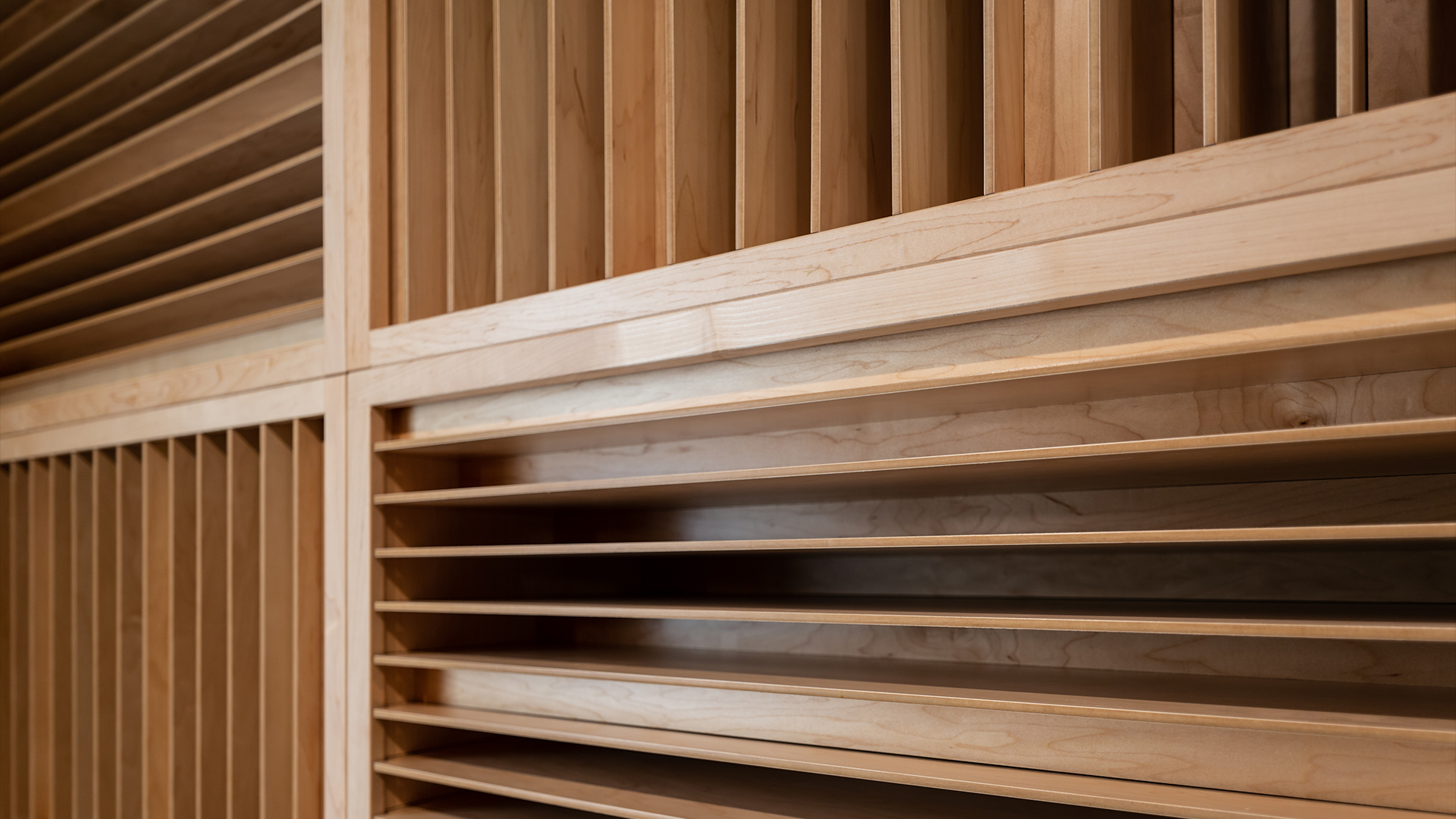
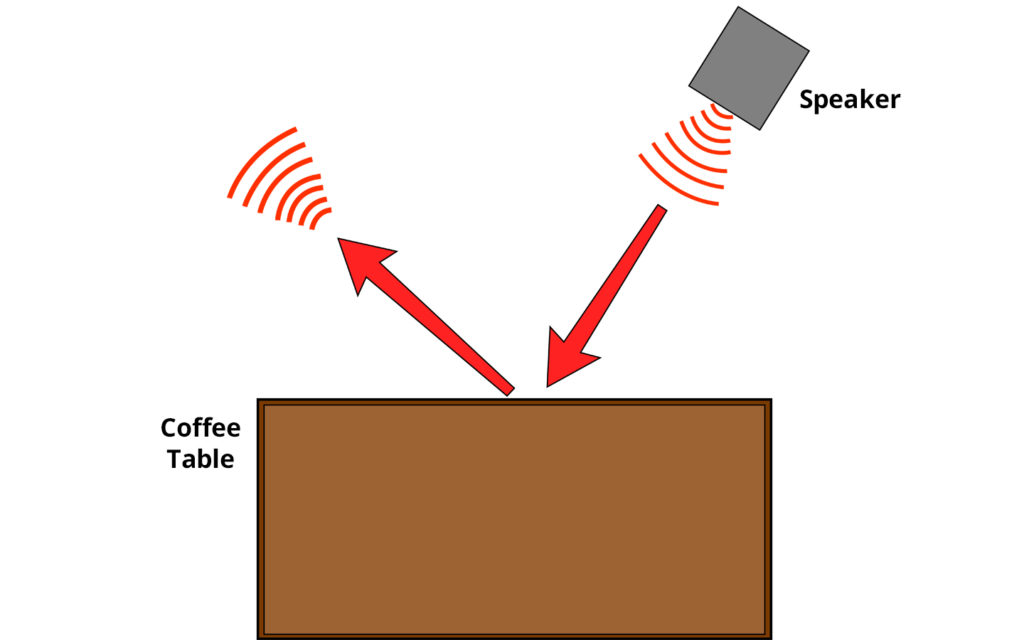
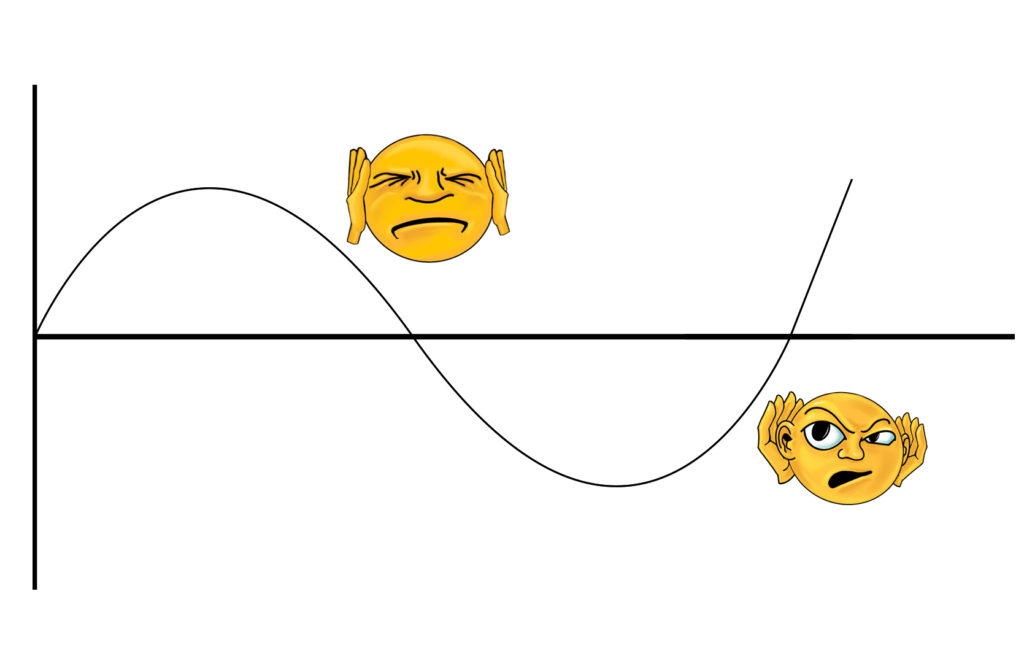
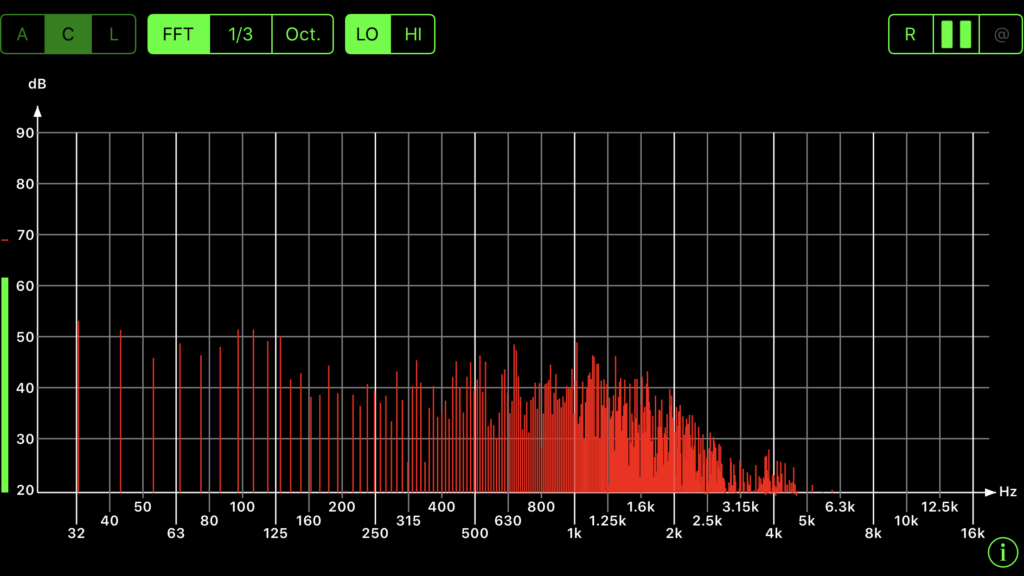
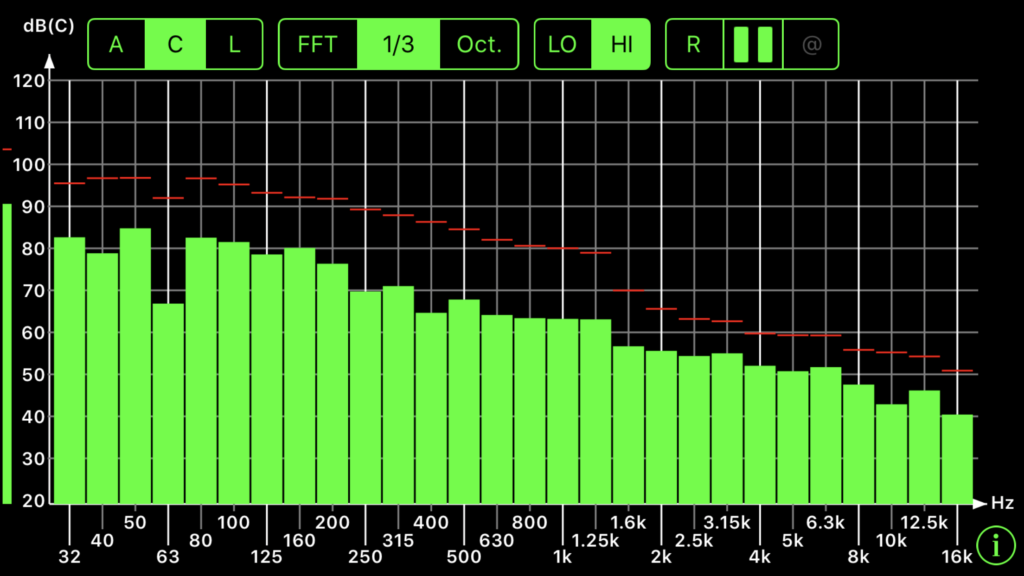
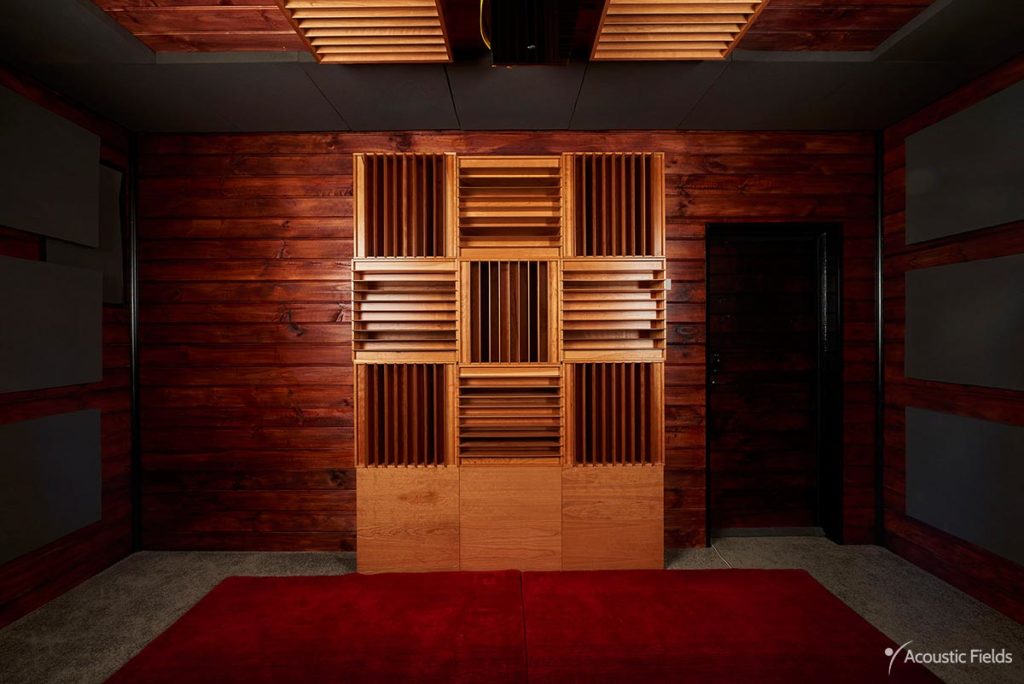
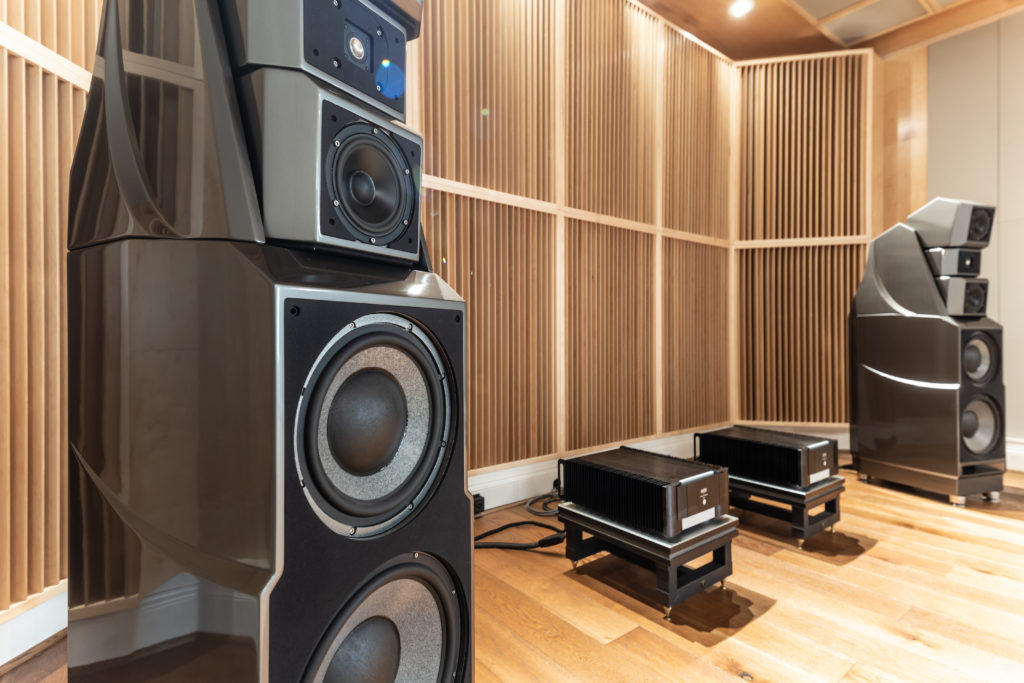





Dennis, in your article on diffuser placement I didn’t see anything mentioned about optimal height placement for front and back walls. Obviously it’s generally impractical to place them floor to ceiling, so why not give the reader some idea about the heights where diffusion works best.
J, Height depends on usage and distance from the receiver to the diffuser. As a general rule, for two-channel systems, front and rear wall diffusion starts at 24″ off the floor and covers the whole wall surface. These dimensions assume a 47″ distance from the floor to ear. Home theater is different and the height of the ceiling platform determines the diffuser orientation.
Very helpful, thanks Dennis. Another question to help your readers on diffuser placement in a two-channel room. In order of priority and with budget constraints in mind, which would treat first using diffusers – the front or rear wall?
D, Two-channel listening diffusion should start with the front and rear walls. Use vertical, one-dimensional for the front wall and either one dimensional or two dimensional for the rear wall. All choices are distance-dependent.